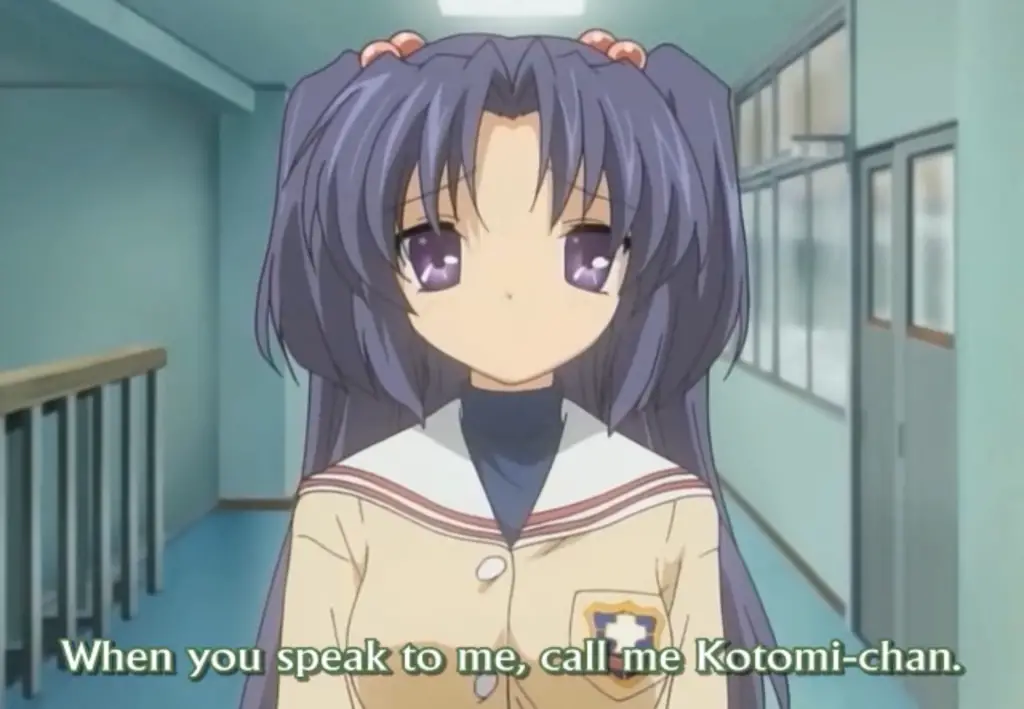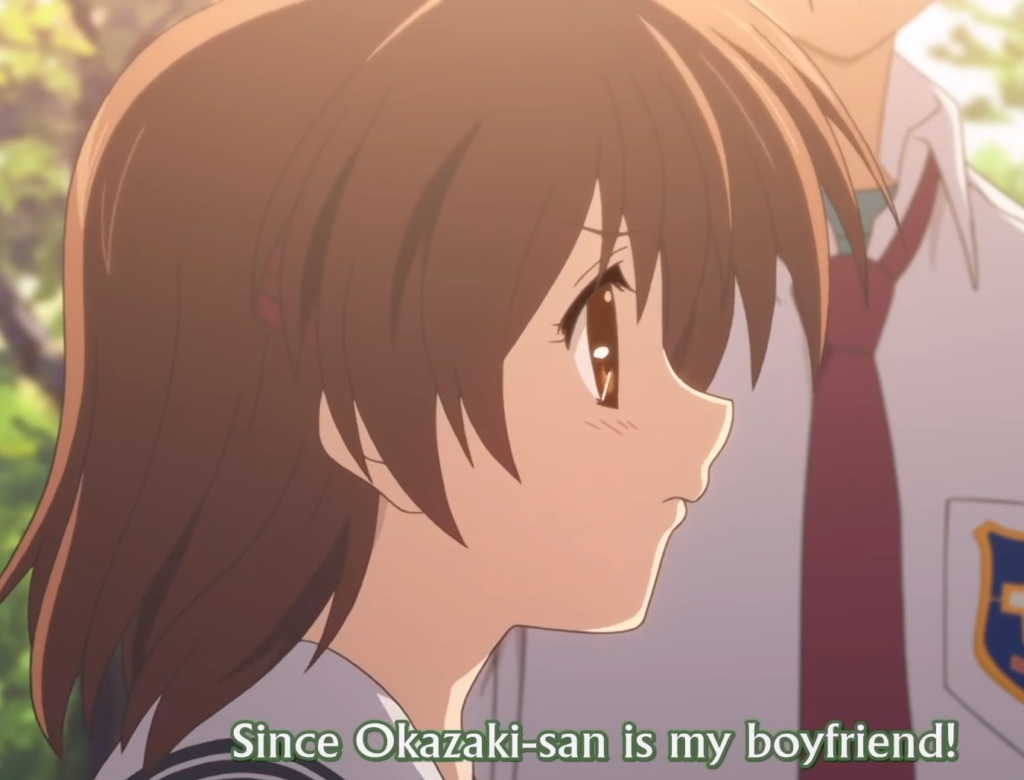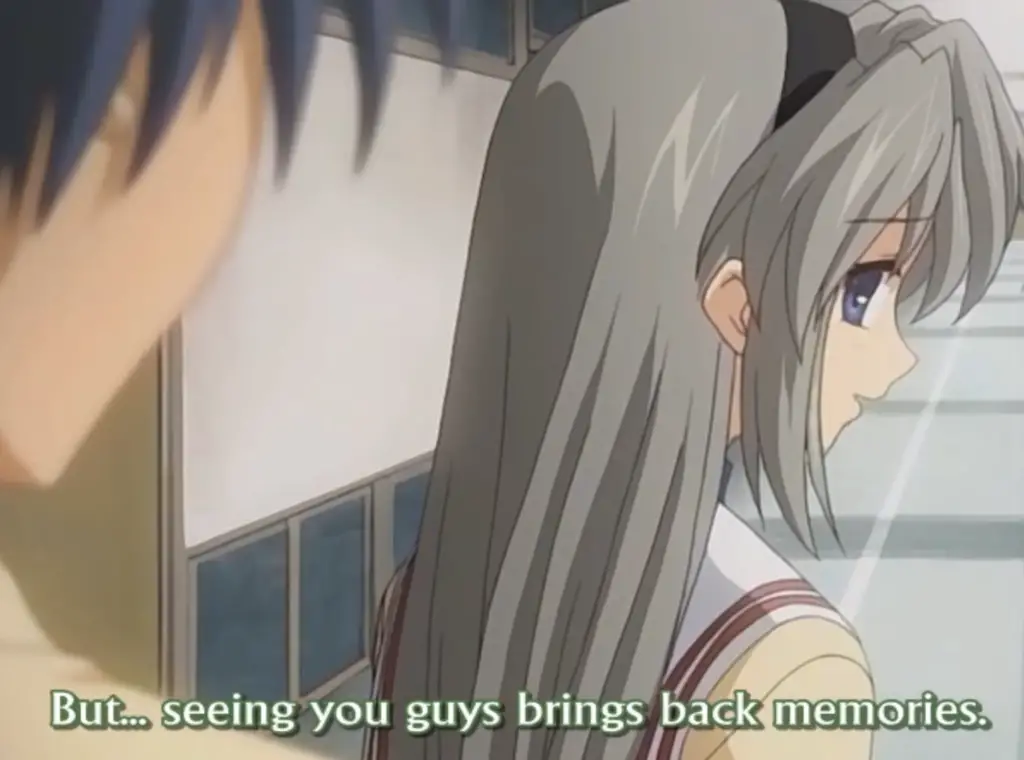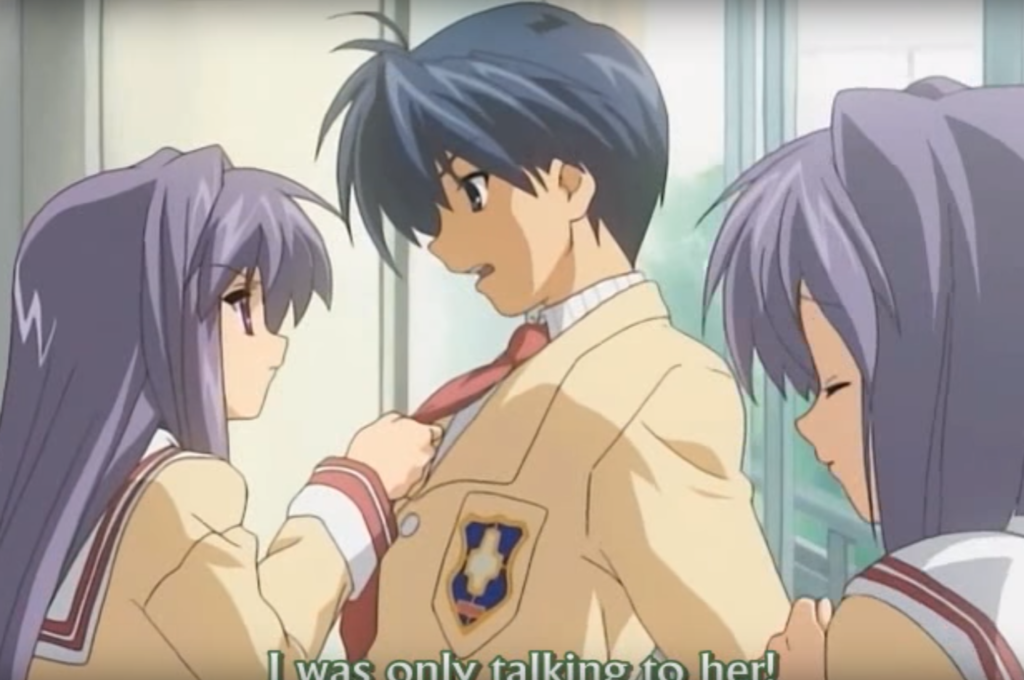![KyoAni Through the Ages: Clannad [2007 – 2008] KyoAni Through the Ages: Clannad [2007 – 2008]](https://adrionox.com/wp-content/uploads/2020/03/KyoAni-Featured-Image-1024x576.jpg)
KyoAni Through the Ages: Clannad [2007 – 2008]
Introduction
In July, an earthquake rippled through the anime community at the news that the much-beloved animation studio Kyoto Animation had suffered a devastating arson attack. With at least 30 people killed and a similar number injured, it’s one of the worst massacres in Japan since the Second World War.
Needless to say, this was a shocking tragedy born of a senseless act of violence, and I hope the studio will get back on its feet soon. Reflecting on the studio’s history, I realised KyoAni’s main body of work mostly came out soon after I became an anime fan, and as a result, I’ve seen quite a few of their anime over the years, and also wrote reviews on almost everyone I’ve seen. I want to publish those review as series here, charting the studio’s rise over the last 15 years or so as seen through my personal perspective.
While KyoAni is widely regarded as one of the best studios around, I have not always taken to their work easily. Although the studio’s been around since the 80s, it wasn’t until the early 2000s before they had any significant output. The first major anime that bore KyoAni’s name as the main studio hailed from the Full Metal Panic franchise where they took over from the studio Gonzo. And ever since those early days they have showcased consistent, jaw-dropping technical expertise that few if any other studios could match.
Soon after, anime hit peak moe, and I get the sense that KyoAni had a big hand in this – or in the very least epitomised the trend – pumping out a series of smash hits such as “K-On”, “Clannad” and that Haruhi thing which no one seems to remember anymore. For me though, it was a period in which KyoAni had distilled moe down to such a potent form – particularly in their collaboration with the visual novel studio Key – that I found their output (especially their female characters) rather distasteful. As a result, for a long time, KyoAni ranked as one of my least favourite studios.
Over years though, I gained a grudging respect for the studio, not only for their technical virtuosity but also their refreshingly humane practices in an infamously gruelling industry. And as the studio grew out of their moe phase, I have even found myself able to enjoy their works once more.
I’ll kick off this series with my review on “Clannad” (although I have written reviews on KyoAni’s contribution to Full Metal Panic, I’ve decided not to include those as the studio came onto the franchise late, which complicates the process of framing the reviews within the context of this blog series).
Clannad
I have to thank “Clannad”, for increasing my Japanese vocabulary and introducing me to a new word. While watching “Clannad” at my local anime society, I could feel a certain *something* radiating from it. I’d encountered similar feelings before in other anime, but never quite so strongly. By the end of the show, I picked up a new word to go with that feeling.
That word is “moe”. I’d never come across the word before “Clannad”, but I sure as hell knew its meaning afterwards. The word categorises a feeling that originates from the sweetness of the female characters, a sweetness that oozes from their character designs to their voices to the way they behave. But it’s not a charming kind of sweetness that you get from, say, “Aria” or “Usagi Drop”. Rather, it’s a cloying kind of sweetness, the kind that makes my toothache and my stomach churn. I can’t stand this kind of sweetness because it feels so artificial, arising from a cynical, carefully engineered attempt to portray the girls as cutely as possible. Taken to this extreme, it’s the anime equivalent of junk food – all empty calories and no real substance or nutrition, serving only to obstruct good characterisation.
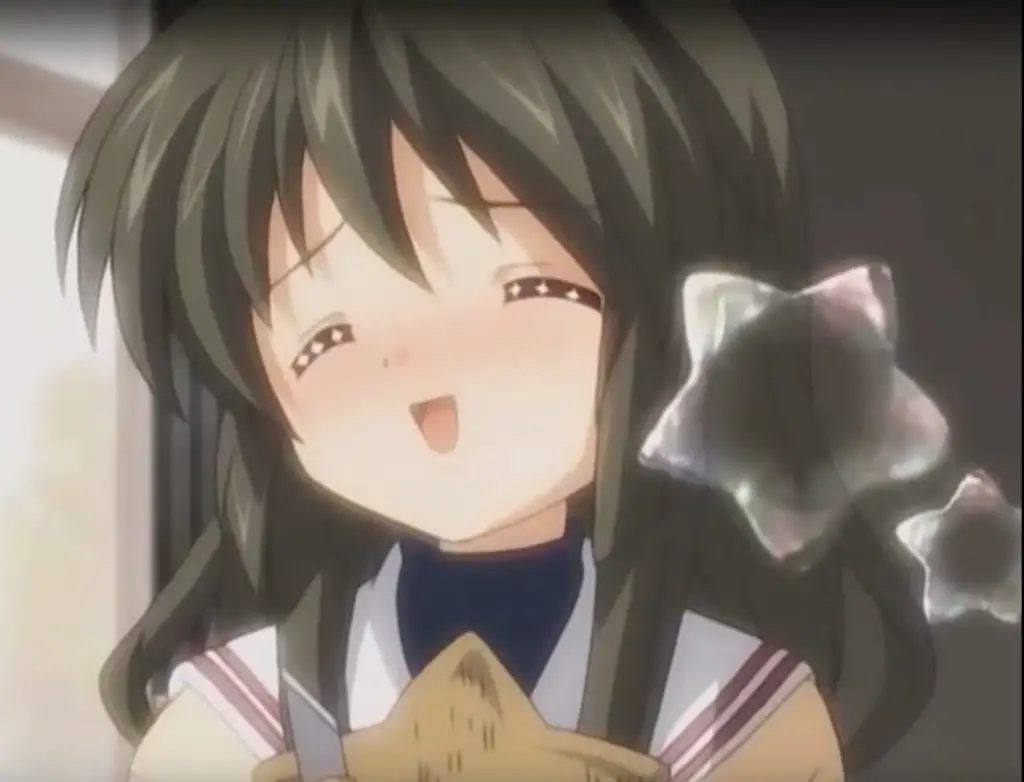
You can tell pretty quickly that “Clannad” originates from a harem visual novel or a dating sim. The main protagonist doesn’t waste much time hooking up with most of the girls within his field of view. What’s more, the character designs, with their hair colours extracted from almost all major parts of the visible spectrum, are exactly what you’d expect from that kind of source material. There’s the Brown-Haired Girl, the Blue-Haired Girl (they don’t even need names, and to be honest they don’t deserve them), the Grey-Haired Girl, and even a pair of Purple-Haired Twins. In fact, I’m surprised to see the roster missing a Pink-Haired Girl.

Blue-Haired Girl 


Purple-Haired Twins
Predictably a generically distinct personality is assigned to each girl. Now, “generically distinct” may sound like an oxymoron, but let me elaborate. The girls’ personalities are all distinct from one another, but they all conform to their own generic archetype that can be readily identified within about 20 seconds of their introduction. There’s the Moronically-Childish Girl (aka Green Haired Girl), the Shy Girl (aka one-half of the Purple-Haired Twins), the Tsundere Girl (aka the other half of the Purple-Haired Twins) etc etc. Again, I’m surprised to see the roster missing a Ditzy Girl – maybe the writers deliberately missed one out in order to prevent the whole thing from becoming even more painfully transparent. It also soon becomes obvious that, though all the girls show interest in the protagonist, for the purpose of this playthrough-, er, I mean, storyline, the player- I mean, protagonist, has targeted Generically Sweet Girl (aka Brown Haired Girl) to woo.
Though I guess “Clannad” is technically not quite a harem since the show contains another guy besides the main character, it may as well be one. The other guy in question qualifies as a guy only on technicalities. In practice, he more closely resembles some sub-human creature roughly on the level of a worm and is suitably treated like one too. Most of the girls treat him with disdain, and none of them is interested in him in the slightest. To be fair, the main character himself isn’t quite your average harem lead, and for this reason, I have decided to give him the courtesy of actually using his name for the purpose of this review: he’s called Okazaki Tomoya. What makes Tomoya different from a typical harem lead is that although he’s a bit of a good for nothing, he at least possesses more charisma and confidence than the typical loser-but-nice stereotypical lead that’s recycled through most harems, and so you can at least kind of get why he’s able to attract a harem, especially when standing next to the worm-like-lowlife he’s always hanging around with.
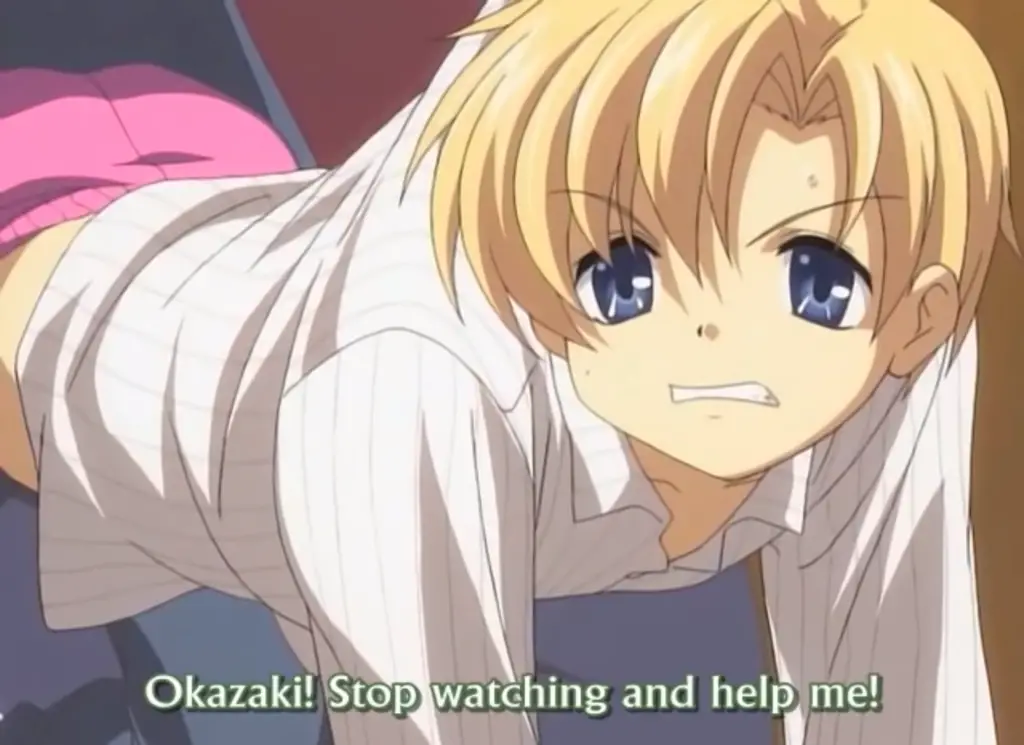
Other than the insane amount of moe, “Clannad” distinguishes itself by the insane amount of heavy-handed manipulation of emotions. The show has more of it than “Saikano”, and that is saying something. I bristle at the sight of the slice-of-life tag attached to the show because it completely sacrifices any sort of realism associated with that genre in favour of trying to force more emotions out of the viewer with unbelievably melodramatic storylines. The “tragic” stories from the various characters’ pasts feel so contrived that at times it seems like a competition to see which one can be more ridiculous. It’s a competition won by Blue Haired Girl’s backstory involving a teddy bear. The punchline to the story proved so “moving” it had everyone at my anime society showing bursting into tears. Tears of laughter that is.
Moreover, most of the girls – Blue Haired girl being a prime example – disappears into the background as soon as their part of the story is over. The shift in focus from one girl to the next is so swift and ruthless that I found it rather off-putting. What’s the point of spending an arc fleshing out these characters if they’re shelved as soon as their arc is over? Given the source material, I can guess why: the anime probably pulled together storylines from multiple playthroughs focusing on different characters, but couldn’t assemble them into a single, coherent storyline. Brown Haired Girl stands out as the only girl who’s a constant presence throughout, and that’s only because she’s the girl destined to hook up with Tomoya (but don’t worry, if you don’t like the Tomoyo x Brown Haired Girl pairing, Kyoto Animation has rather helpfully made several special episodes which are in essence alternative playthroughs where Tomoya picks someone else).
Just one of the tragic character situations did not come off as overly melodramatic – the one involving Tomoya’s relationship with his dad. However, that one felt like a tacked-on side story that was jarringly integrated into the show. The side story comes into focus randomly with little apparent purpose, and in addition, feels out of place when placed alongside the cheesily cheerful parts. It’s almost as though when given a piece of material with genuine potential, the makers of “Clannad” didn’t quite know what to do with it.
In the end, I’m grateful I watched “Clannad” with others at my anime society, because watching the whole thing by myself would have been an ordeal more harrowing than any of the forced drama the show could conjure up. During the weeks when I couldn’t attend the society showings and had to catch up on the show by myself, it literally took me two or three sittings to grind through each episode because I couldn’t stomach more than a few minutes of “Clannad” at a time. And no wonder – with its sickeningly sweet stench of moe, ludicrously contrived stories and an array of cardboard template cut-outs masquerading as female characters, just what is there to like for someone who’s not into moe or extremely sappy melodrama?
Personal rating: -2.0 (terribad)
